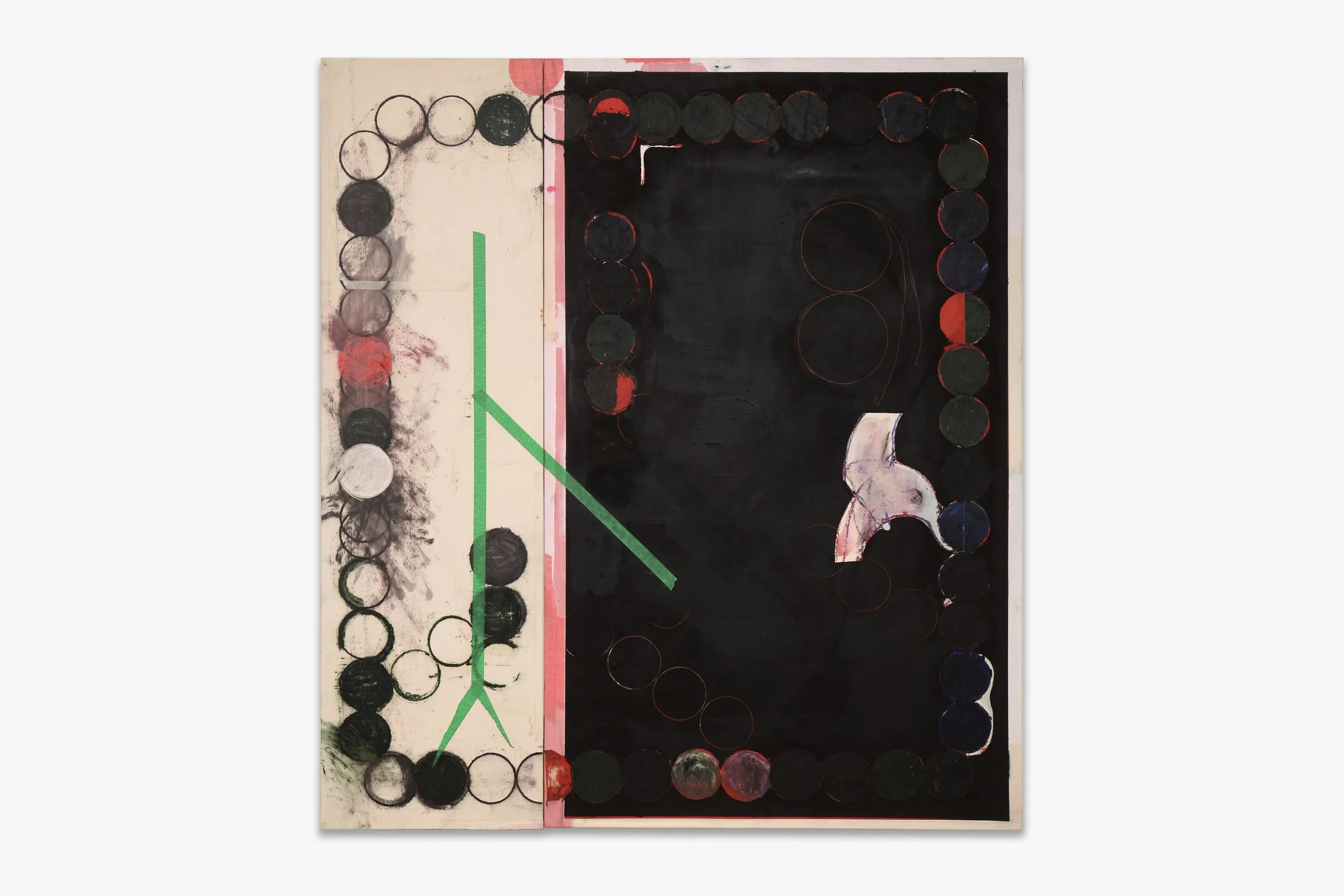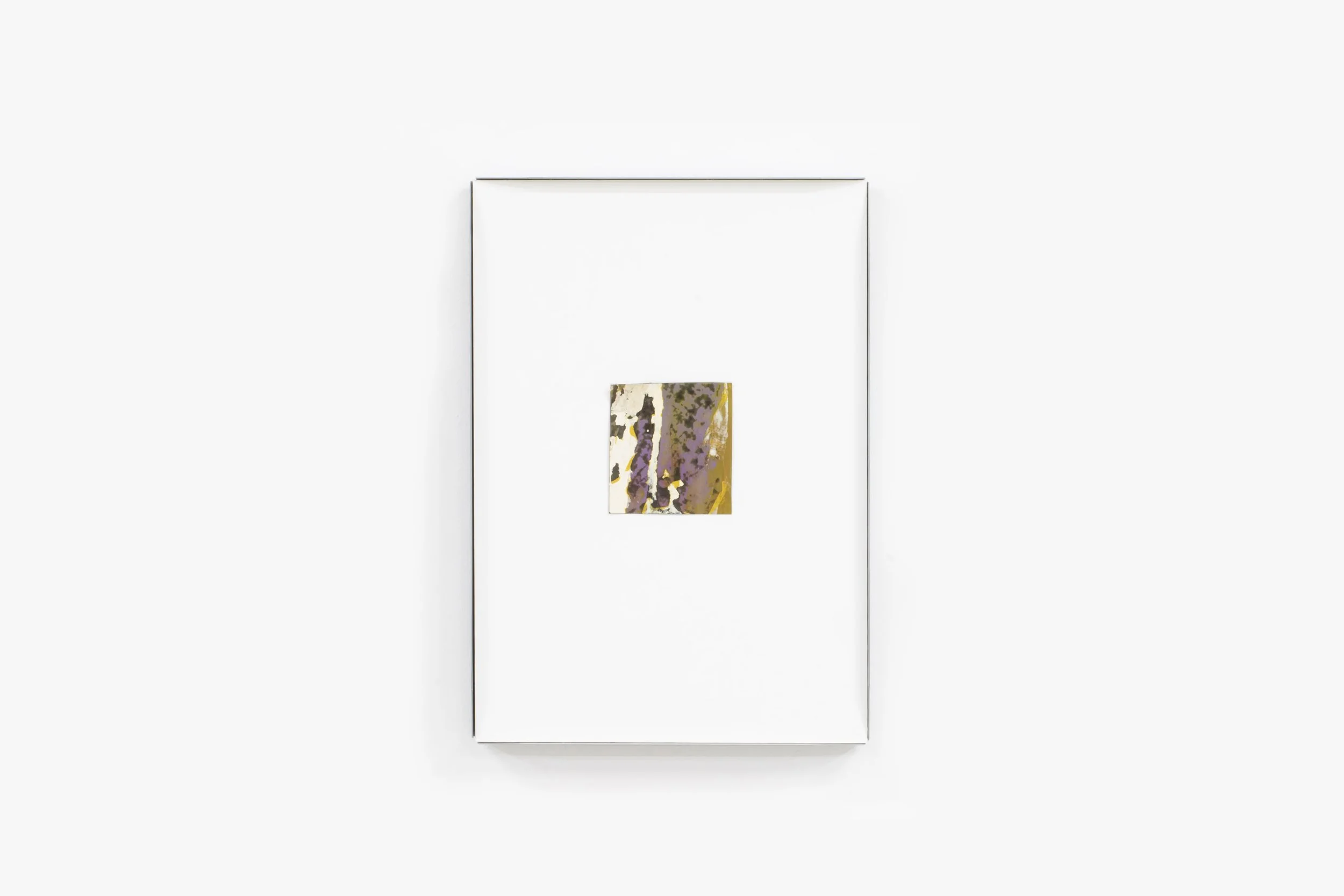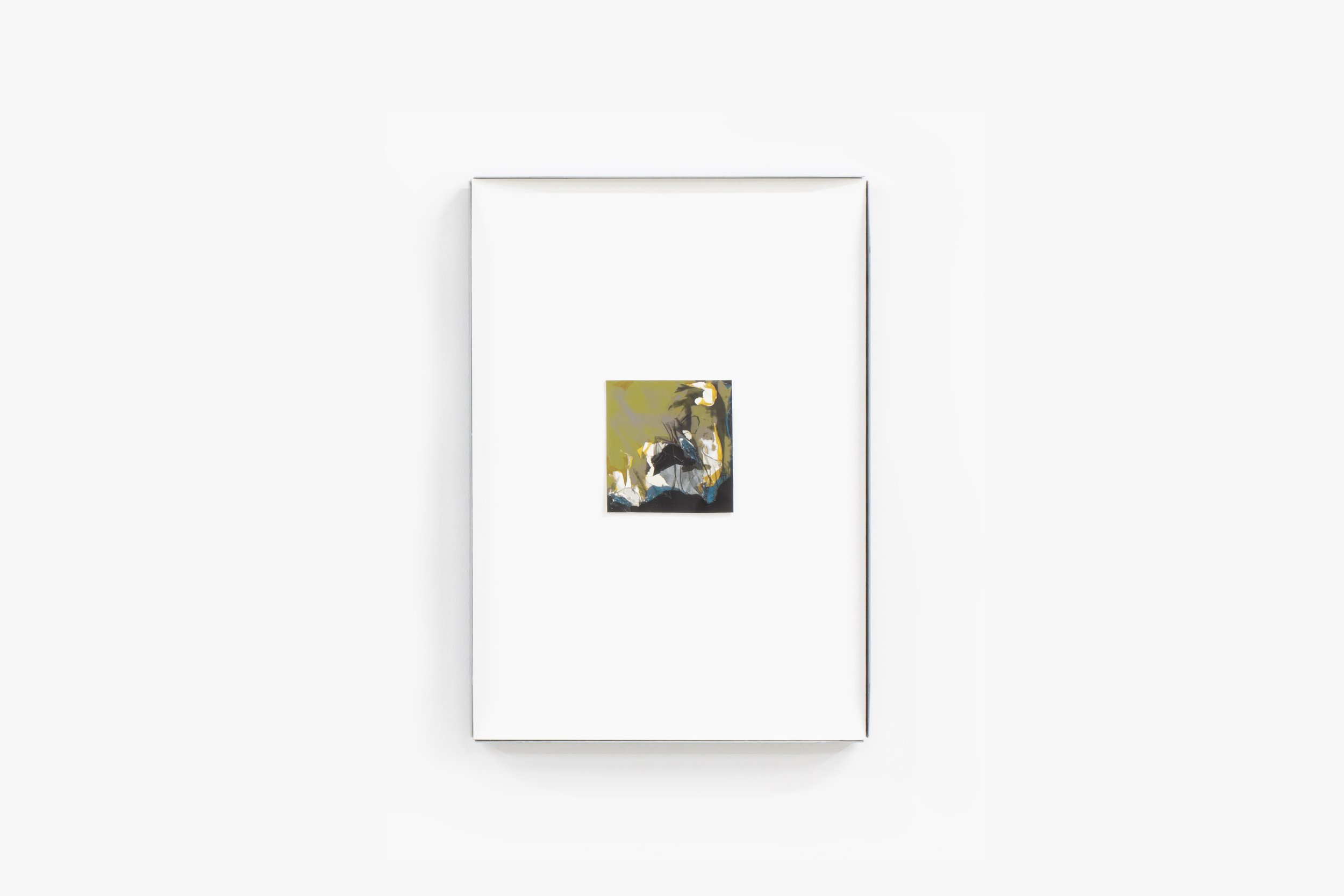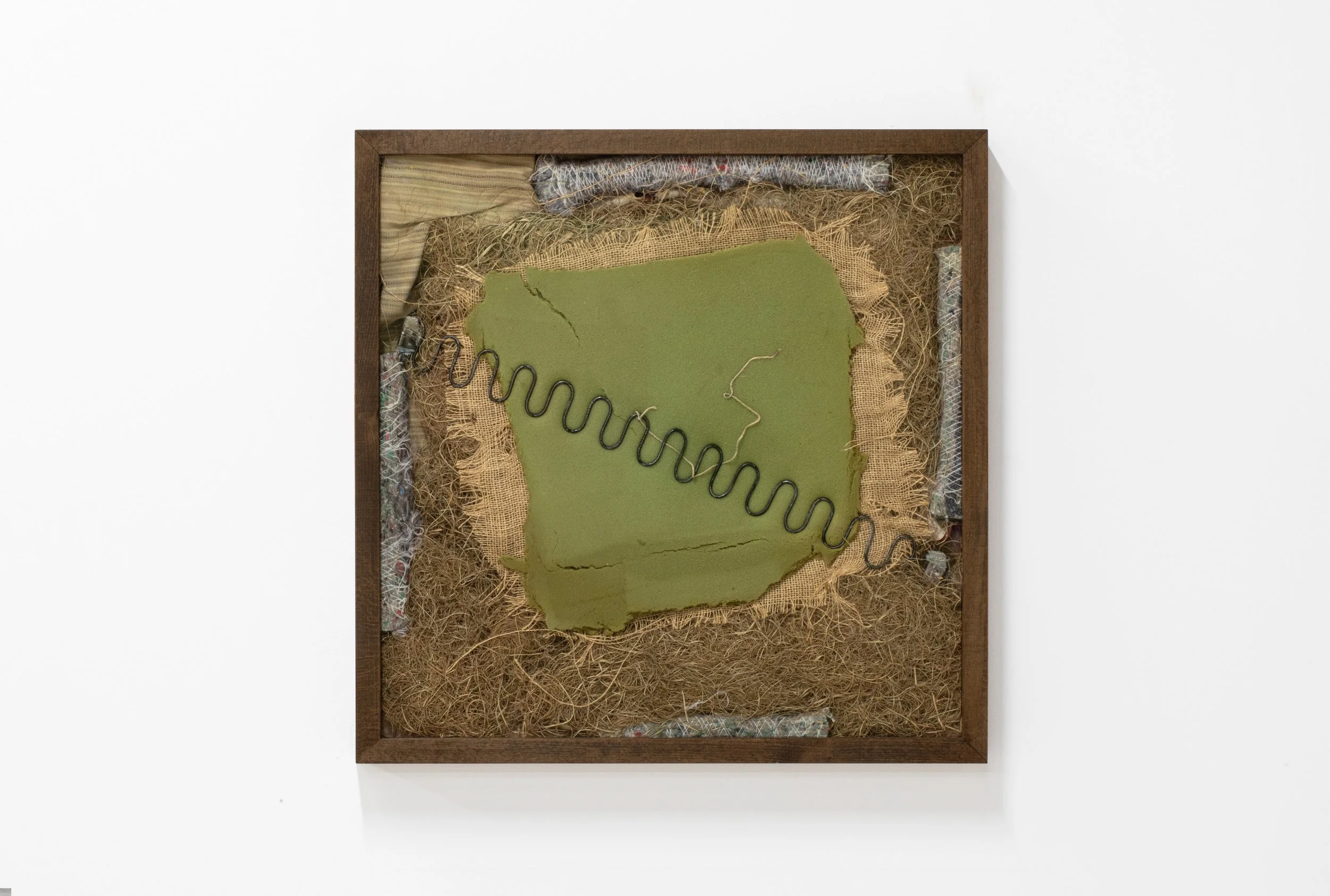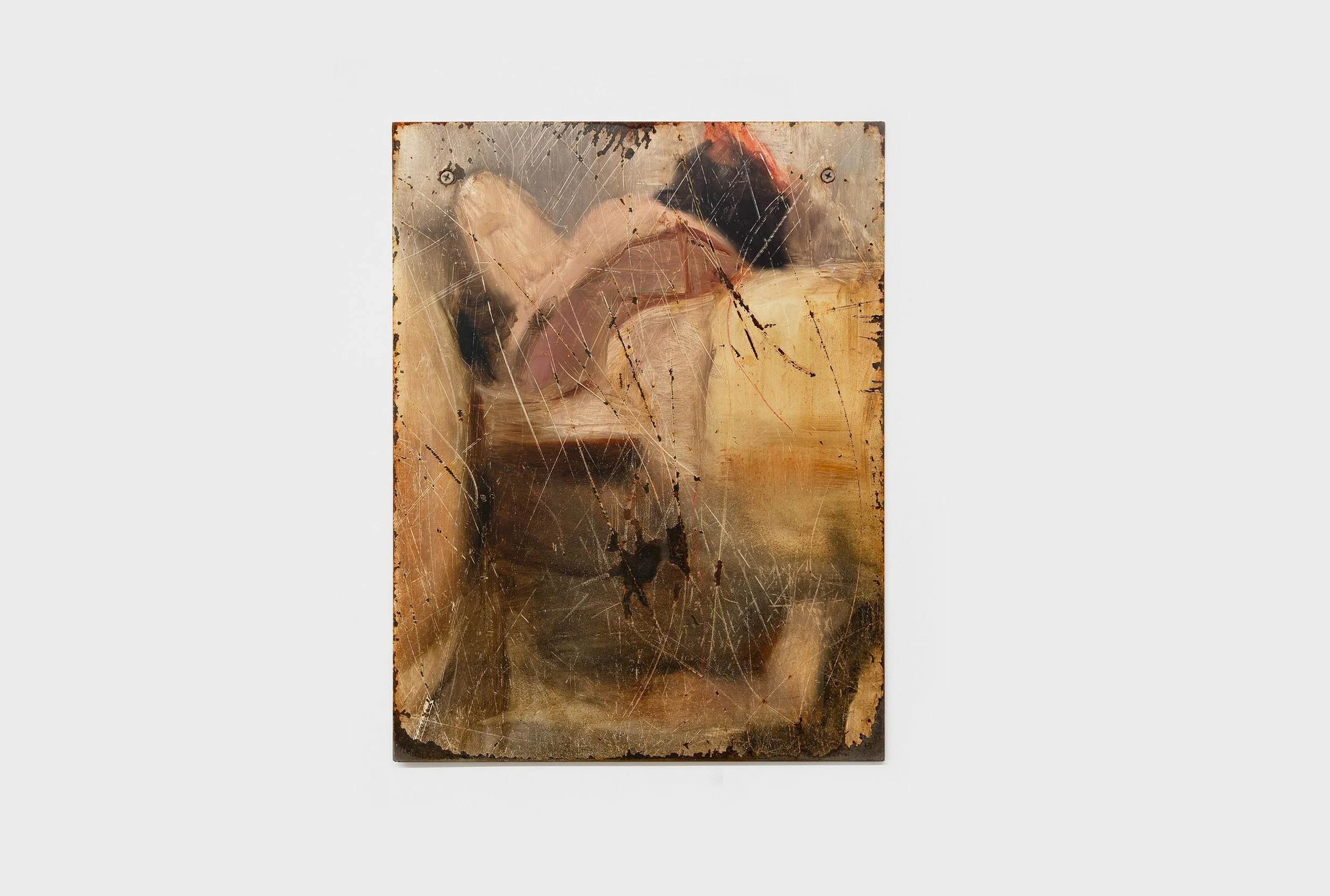Abstractionism
Hans Bellmer, Unai Cardoner, Chryssa, Marie Matusz, Mónica Mays, Sam Lipp, Antonio López, PRICE, Johnathan Wilborn
18 September – 11 October 2025
Blue Velvet Madrid
Calle Pablo Ortiz 9
28026 Madrid, Spain
English poet John Keats first used the term negative capability in a letter to his two younger brothers in 1817. It aimed at coining the ability of certain authors to create “in uncertainties, mysteries, doubts, without any irritable reaching after fact and reason”. Though it only appeared once in the known catalogue of the author, the formula had a large impact on poets and thinkers, and was echoed in renowned essays such as Sontag’s 1964 “Against Interpretation”, in which the writer argued for “an erotics or art” rather than “a hermeneutics”. Building on the same romantic legacy, both authors advocated for a creative and critical process requiring more availability than reason, in which any attempts at expressing the mechanism of subjectivity within time implied the resolution of the gap between presence and duration, between feeling and understanding.
Expanding on this lineage, ‘Abstractionism’ displays works that do not exist outside of discourse, but actively provoke it by embracing irresolution and contradiction. The exhibition gathers practices that, while carrying their own inner set of politics, collectively exist at the frontier between figuration and abstraction. Whether by repetition, inversion, saturation, or deterioration, each piece operates as both symptoms and producers of a vestigial language through which grammar edges towards dissolution. Form appears as the residue of an affected experience with matter, allowing for a negotiation between sentience and logic, and the ability to trace within that spectrum the cultural and ideological influences that shape artistic intuition.
What emerges from this heteroclite assemblage is a counter-protocol to hyperreality: an emotional fragmented system that resists identification and rationalization in favor of poetic resonance, chaotic layering, and atmospheric détournement.
—
Hans Bellmer (1902-1975, Germany) was linked to the Surrealist movement and known for his provocative exploration of the sexual subconscious. Influenced by his studies with George Grosz, a noted societal critic, Bellmer began his artistic career at Berlin’s Malik Verlag, contributing illustrations to Dadaist literature. After moving to Paris in 1938, Bellmer continued to explore themes of dreams, desire, and mortality through sculpture and painting, paving the way to contemporary interests in the erotic and suversive aspects of the uncanny. His works have been exhibited globally, including at MoMA in New York, the Neue Nationalgalerie in Berlin, and the Whitechapel Gallery in London.
Unai Cardoner (b. 1999, Spain) lives and works between Bilbao and Barcelona. His practice, shaped by the interplay of classical Spanish iconography and Basque influence, develops a distinctive visual language through the exploration of symbols and materiality. In his eclectic canvases, faces, bodies, and words often emerge through repetition, carrying subtle autobiographical resonance. Cardoner studied Fine Arts at the University of Barcelona and later earned a Master’s in Painting at the University of the Basque Country in Bilbao. Recent exhibitions include Magic Show and Pickpocket at Rodeo.2182, Barcelona, Delicartessen, Galeria Esther Montoriol Barcelona, and Ceci n’est pas un Claude Collet, Espacio l’Harmonia, Hospitalet.
Chryssa (Chryssa Vardea-Mavromichali, 1933-2013, Greece) was a Greek-American artist best known for her assemblages of neon tubes and large-scale minimalist paintings on canvas. Her work refers to early characteristics of Pop Art, Minimalism and Conceptual Art, while deconstructing the very language of those movements into convoluted abstract architectures. After studying at the Académie de la Grande Chaumière in Paris and the California School of Fine Arts, she moved to New York in 1958. Her first solo exhibition at Betty Parsons Gallery in 1961 quickly led to a major show at the Solomon R. Guggenheim Museum. Throughout her career, Chryssa was represented by prestigious galleries such as Leo Castelli, Pace, and Denise René. Her work was showcased at renowned institutions, including MoMA, Guggenheim, the Whitney Museum, Tate Modern, Documenta, and the Venice Biennial.
Marie Matusz (b.1994, France) lives and works in Basel. Her practice spans sculptural installations, sound, writing, and film, exploring the intricate relationships between materiality, memory, and narrative. Drawing from philosophical, sociological, and linguistic theories, her works evoke a cinematic unspoken sensibility—merging stillness and motion to create reflective spaces where temporal and spatial perceptions collapse on each other. Marie Matusz obtained a bachelor’s degree in Visual Arts from the Geneva University of Art & Design (HEAD) in 2016 and a master’s from the Basel Academy of Art & Design (FHNW) in 2018. Recent solo exhibitions include: Reservoir at Kunsthalle Basel (2025); Prequel, Blue Velvet Projects, Zurich (2023); Lonely Daters, Clima Milan; Fall at Swiss Institute, Milan; Vulture, Der Tank, Basel (2022); Until We Turn Blue (Dorothea Von Stetten Art Award), Kunstmuseum Bonn (2020) and Epoche, Kunst Raum Riehen (2020).
Mónica Mays (b.1990, Spain) lives and works between Madrid and Zurich. Her sculptural practice combines autobiography, material process, and historical archive. Drawing from Baroque logic, Mays explores excess, blurry edges, and dramatic movement, focusing on the complex layering of meaning embedded in the objects she uses, and revealing the violence and fragility they oscillate between. Having studied Cultural Anthropology at the University of New Orleans, she graduated from the École Supérieure des Arts Décoratifs in Strasbourg in 2015 and received an MA from the Sandberg Instituut in Amsterdam in 2017. Recent exhibitions include Fragment and Form at The Henry Moore Institute, Leeds (2025), ridden at Blue Velvet Zurich (2025) and On Immanence, Pedro Cera Lisbon. Her work is part of renown international collections such as Museo Nacional Centro de Arte Reina Sofía, Museo Centro de Arte Dos de Mayo, DKV Arteria and Fondazione Sandretto Re Rebaudengo.
Sam Lipp (b. 1989, London) lives and works in New York. His work explores the image and its situation within systems of power, often focusing on representations of the body in relation to authority. Working largely in oil on steel, Lipp considers the material implications of the image and the conditions that produce it, often incorporating processes of degradation of the physical object (frottage, rust) and of the image itself (overexposure). His practice situates the digital image as the central mediating unit of the libidinal economy, where the painted object functions as a material referent for the immaterial image that supersedes it. Recent and forthcoming solo exhibitions include Soft Opening, London (2026); Derosia, New York (2025, 2022); Conditions, Toronto (2024); Bonny Poon, Paris (2019). Group exhibitions include The Museum of Contemporary Art, Los Angeles (2024–2025); Antenna Space, Shanghai (2025); Bradley Ertaskiran, Montreal (2024); Conditions, Toronto (2024); Vacancy, Shanghai (2024); Soft Opening, London (2023); Cell Project Space, London (2019); National Portrait Gallery, London (2018); Bundeskunstalle, Bonn, Germany (2019) and Espoo Museum of Modern Art, Espoo, Finland (2018–2019).
Antonio López (b. 1993, Quito, Ecuador) currently lives and works between Frankfurt am Main and Quito. His work spans across multiple media, delving into materiality and conceptual depth, often reflecting on themes of memory, identity, and spatial perception. In their layers of pictograph and gesture, his works allow for a collapse of the categorical differentiation between the symbolic and the indexical. López holds a BFA from The School of the Art Institute of Chicago (2017) and an MA from Städelschule, Class Monika Baer (2024). His recent exhibitions include “Hydra (or downtown)” at Louche Ops (Berlin, 2024); “Glower” at Larder (Los Angeles, 2023); “Flintlock” at ECHO (Köln, 2023); “Tidal” at fffriedrich (Frankfurt am Main, 2023); and “Errandt” at Rudimento (Quito, 2021) among others. His work was also exhibited at Art Basel Paris (2024) and Art Basel Basel (2025).
PRICE (b.1986, Brazil) lives and works between Switzerland and Brazil. His practice is characterised by elaborate soundscapes, costumes and stage design often developed in collaborative constellations. Building on queer erotics and theatricality, his productions are interspersed with pop-cultural set pieces, mechanical sounds, rhythms and singing. In PRICE’s work, different spaces — each with their own economies, mechanisms of historicization and exclusion, norms and potentials — overlap: the stage of theater and performance, the club, the fashion runway, the digital space, the exhibition space.
Johnathan Wilborn (b.1994, USA) is an interdisciplinary artist living and working in New York, primarily in painting, sculpture, video, and installation. His work aims at creating connections between perception and corporal reality, utilizing color and the everyday to collapse our preconceived notions of subjecthood and time. He received his BFA from The Cooper Union for the Advancement in Art and Sciences (2020) and an MFA from Mason Gross School of Art at Rutgers University (2025). Selected exhibitions include Theta Gallery, New York (2025), Westbeth Gallery, New York (2025), Mason Gross Gallery, New Jersey (2023-2025) and Will Shott, New York (2023). He attended Yale Norfolk in 2019 and received the Michael S.Vivo Memorial Prize in 2020.
Johnathan Wilborn Untitled (from the labyrinth of my eye), 2025 watercolor, pigment, color pencil, oil on wood 30 x 30 cm
Unai Cardoner Pearl Necklace, 2025 Oil and tape on canvas and wood panel 156 x 142 cm
Marie Matusz Swimmers on the shore, 2023 Polaroid 7,7 x 7,5 cm (not framed)
Marie Matusz Swimmers on the shore, 2023 Polaroid 7,7 x 7,5 cm (not framed)
Private Viewing VIII, 2025 Plexiglas, wood, metal, paint 23 x 28 x 20 cm
Johnathan Wilborn Flossin, 2025 mixed media on wood 40 x 40 cm
Mónica Mays Bottoms, 2025 Insides of found chair, wood, glass 66 x 66 x 6 cm
Hans Bellmer Éudes pour les marionettes, 1955 pencil and gouache on paper 30 x 21 cm
Hans Bellmer Éudes pour les marionettes pencil on paper 30 x 21 cm
Sam Lipp Exit, 2025 Oil and frottage on steel, screws 43,2 x 33 cm
Sam Lipp Herm, 2025 Oil and frottage on steel, screws 43,2 x 33 cm
Chryssa Study for the gates, 1966 ballpoint pen on paper 14,5 x 13,5 cm (unframed)
Antonio López Royer, 2025 Oil on canvas, metal 170 x 130 cm
Unai Cardoner Untitled (Torso), 2024 Oil on canvas 150 x 104 cm
Antonio López Untitled, 2025 Oil on canvas, metal 170 x 130 cm











